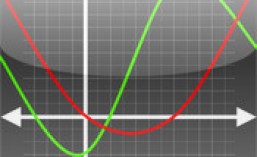Given its social and cognitive affordances, extend discussion by describing several active student and teacher roles and one activity you could envision with this technology. Suggest how the activity and roles are aligned with LfU principles.
The goal of Radinsky, Oliva, and Alimar (2009) was to help educators recognize, assess, and promote the process of constructing scientific ideas as shared intellectual property in the classroom (p.622). The researchers observed students using meteorological and climatological data from the internet as well as the MyWorld geographic system, to access large amounts of data and “to reason about these phenomena, generate explanations, test those explanations against more data, and revisit their evolving ‘theories’” (Radinsky, Oliva, and Alimar, 2009, p.622).
An interesting method was discussed in this article. The “Science-talk” is a free-flowing, dialogue centered discussion in which there are no wrong answers; only brainstorming to generate ideas, theories, and avenues of exploration. This is authentic scientific work – the students are told the rules, and that it is one thing scientists do when they begin to study phenomena. Students in the study were encouraged to engage in science-talk in more than just English, but in their other language (Spanish). The talks also allowed the teacher to access the student’s thinking, which acts as a guide for direction in future instruction and discussion.
Active student and teacher roles are important in co-constructing knowledge. It is necessary to step away from the teacher as the sole source of knowledge, meting it out to students in small doses. Students in small groups can collectively access their prior knowledge, from meaning from new data, brainstorm solutions, theories and explanations, and in accessing new information, refining their ideas – discarding what does not work and modifying that which does. What is the teacher doing while this is happening? Listening carefully for the right moments to step in, direct students to resources, NOT correcting wrong theories but allowing students to discover this themselves, and generally aiding in the simulation of authentic scientific investigations, method, and practices. These activities which focus on collaborative construction of knowledge are all rooted firmly in Edelson‘s principles of LfU (Learning for Use) below.
4 principles
(Edelson, 2000, p.357).
1. Learning takes place through the construction and modifcation of knowledge structures.
2. Knowledge construction is a goal-directed process that is guided by a combination of
conscious and unconscious understanding goals.
3. The circumstances in which knowledge is constructed and subsequently used determine
its accessibility for future use.
4. Knowledge must be constructed in a form that supports use before it can be applied.
3 steps
(Edelson, 2000, p.358-359).
Motivation: Experiencing the Need for New Knowledge. (create demand and elicit curiosity)
Knowledge Construction: Building New Knowledge Structures. (observe and communication)
Knowledge Refinement: Organizing and Connecting Knowledge Structures.(reflect and apply)
Edelson, D.C. (2001). Learning-for-use: A framework for the design of technology-supported inquiry activities. Journal of Research in Science Teaching,38(3), 355-385.
Radinsky, J., Oliva, S., & Alamar, K. (2009). Camila, the earth, and the sun: Constructing an idea as shared intellectual property. Journal of Research in Science Teaching, 47(6), 619-642
